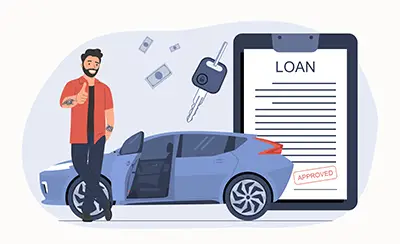Buying a car is a major financial decision, and for many Americans, financing is the only way to make it happen. Motor vehicle financing, whether through a loan or a lease, can help you get behind the wheel of your desired ride, but it also comes with its fair share of advantages and disadvantages. In this blog post, we’ll explore the pros and cons of motor vehicle financing to help you make an informed decision.
Advantages of Motor Vehicle Financing
1. Immediate Access to Your Dream Car
One of the biggest advantages of financing a vehicle is that it allows you to drive away in your dream car without having to save up the entire purchase price upfront. With financing, you can pay for the vehicle over an extended period, making it more affordable in the short term.
Lower Upfront Costs
When you finance a car, you only need to pay a down payment, which is typically a fraction of the vehicle’s total cost. This lower upfront cost makes it easier for many people to afford a newer or more expensive vehicle than they could with a cash purchase.
2. Potential Tax Benefits
If you finance a vehicle for business use, you may be able to deduct a portion of the interest paid on the loan from your taxable income. This can result in significant tax savings, especially for self-employed individuals or small business owners who rely heavily on their vehicles.
3. Building Credit History
By making timely payments on your auto loan, you can build or improve your credit history, which can be beneficial when applying for other types of financing, such as a mortgage or personal loan, in the future.
Disadvantages of Motor Vehicle Financing
1. Interest Charges
When you finance a vehicle, you’ll pay interest charges on top of the principal amount you borrowed. These interest charges can add up significantly over the life of the loan, increasing the overall cost of the vehicle.
Higher Total Cost
Due to interest charges, the total cost of the vehicle when financed is typically higher than if you had paid cash upfront. This means you’ll end up paying more for the same vehicle in the long run.
2. Negative Equity (Being “Upside-Down”)

If you finance a vehicle for a longer term or put little to no money down, you may find yourself in a situation where you owe more on the loan than the vehicle is worth. This is known as negative equity or being “upside-down” on the loan. It can make it difficult to trade in or sell the vehicle without owing additional money.
3. Potential for Repossession
If you fail to make your loan payments, the lender has the right to repossess the vehicle. This can severely damage your credit score and make it harder to obtain financing in the future.
4. Restrictions on Modifications or Customizations
When you finance a vehicle, the lender technically owns it until the loan is paid off. This means you may be restricted from making certain modifications or customizations to the vehicle without the lender’s approval.
Strategies for Smart Motor Vehicle Financing
Avoid Negative Equity To avoid falling into negative equity, make a substantial down payment (at least 20% of the vehicle’s value) and choose a shorter loan term (3-4 years maximum). This will help ensure you don’t owe more than the vehicle is worth.
Minimize Interest Charges Shop around for the best interest rates and negotiate with lenders. Consider getting pre-approved for a loan before visiting the dealership, as this can give you more bargaining power. You can also make larger monthly payments or pay a lump sum toward the principal to reduce the total interest paid over the life of the loan.
Understand Tax Implications If you’re financing a vehicle for personal use, there are generally no tax benefits. However, if you’re using the vehicle for business purposes, you may be able to deduct a portion of the interest and other associated costs. Consult with a tax professional to understand your specific situation.
Navigating Motor Vehicle Financing
Financing a vehicle can be a convenient way to get behind the wheel of your desired ride, but it’s important to understand the potential advantages and disadvantages before committing to a loan or lease agreement. Consider your financial situation, long-term goals, and the true cost of financing when making your decision.
Also Read:
- The Rise of CUV Cars: Everything You Need to Know
- How Much Gas Does Your Car’s AC Use?
- Flat Tire But No Hole? Here’s What to Do
- When To Change Your Brake Fluid? How Much Does It Cost?
If you do decide to finance, be sure to shop around for the best interest rates and terms, and carefully read and understand the contract before signing. With the right approach, motor vehicle financing can be a practical solution for many car buyers in the United States.



[…] Motor Vehicle Financing: Pros and Cons You Need to Know […]
[…] Motor Vehicle Financing: Pros and Cons You Need to Know […]
[…] Motor Vehicle Financing: Pros and Cons You Need to Know […]